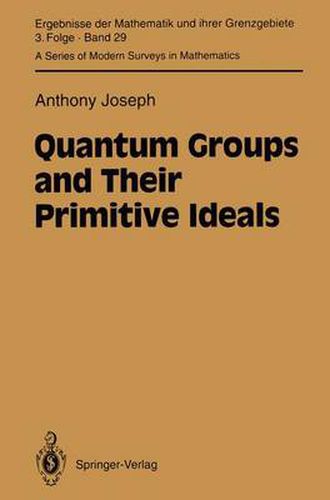Readings Newsletter
Become a Readings Member to make your shopping experience even easier.
Sign in or sign up for free!
You’re not far away from qualifying for FREE standard shipping within Australia
You’ve qualified for FREE standard shipping within Australia
The cart is loading…






This title is printed to order. This book may have been self-published. If so, we cannot guarantee the quality of the content. In the main most books will have gone through the editing process however some may not. We therefore suggest that you be aware of this before ordering this book. If in doubt check either the author or publisher’s details as we are unable to accept any returns unless they are faulty. Please contact us if you have any questions.
by a more general quadratic algebra (possibly obtained by deformation) and then to derive Rq [G] by requiring it to possess the latter as a comodule. A third principle is to focus attention on the tensor structure of the cat egory of (!; modules. This means of course just defining an algebra structure on Rq[G]; but this is to be done in a very specific manner. Concretely the category is required to be braided and this forces (9.4.2) the existence of an R-matrix satisfying in particular the quantum Yang-Baxter equation and from which the algebra structure of Rq[G] can be written down (9.4.5). Finally there was a search for a perfectly self-dual model for Rq[G] which would then be isomorphic to Uq(g). Apparently this failed; but V. G. Drinfeld found that it could be essentially made to work for the Borel part of Uq(g) denoted U (b) and further found a general construction (the Drinfeld double) q mirroring a Lie bialgebra. This gives Uq(g) up to passage to a quotient. One of the most remarkable aspects of the above superficially different ap proaches is their extraordinary intercoherence. In particular they essentially all lead for G semisimple to the same and hence canonical , objects Rq[G] and Uq(g), though this epithet may as yet be premature.
$9.00 standard shipping within Australia
FREE standard shipping within Australia for orders over $100.00
Express & International shipping calculated at checkout
Stock availability can be subject to change without notice. We recommend calling the shop or contacting our online team to check availability of low stock items. Please see our Shopping Online page for more details.
This title is printed to order. This book may have been self-published. If so, we cannot guarantee the quality of the content. In the main most books will have gone through the editing process however some may not. We therefore suggest that you be aware of this before ordering this book. If in doubt check either the author or publisher’s details as we are unable to accept any returns unless they are faulty. Please contact us if you have any questions.
by a more general quadratic algebra (possibly obtained by deformation) and then to derive Rq [G] by requiring it to possess the latter as a comodule. A third principle is to focus attention on the tensor structure of the cat egory of (!; modules. This means of course just defining an algebra structure on Rq[G]; but this is to be done in a very specific manner. Concretely the category is required to be braided and this forces (9.4.2) the existence of an R-matrix satisfying in particular the quantum Yang-Baxter equation and from which the algebra structure of Rq[G] can be written down (9.4.5). Finally there was a search for a perfectly self-dual model for Rq[G] which would then be isomorphic to Uq(g). Apparently this failed; but V. G. Drinfeld found that it could be essentially made to work for the Borel part of Uq(g) denoted U (b) and further found a general construction (the Drinfeld double) q mirroring a Lie bialgebra. This gives Uq(g) up to passage to a quotient. One of the most remarkable aspects of the above superficially different ap proaches is their extraordinary intercoherence. In particular they essentially all lead for G semisimple to the same and hence canonical , objects Rq[G] and Uq(g), though this epithet may as yet be premature.